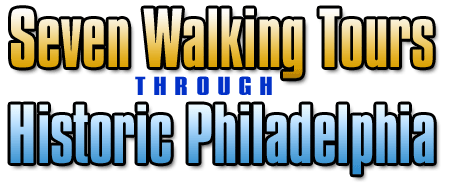Lemon Hill


This estate was known in 1770 as The Hills, and from that year until 1799 it was the home of Robert Morris, Declaration signer, and a major financier of the Revolution. Morris built a greenhouse on the property, one of the first such in the country. He later went bankrupt due to his land speculations, and Henry Pratt, a Philadelphia merchant, purchased the main part of the property at a sheriff's sale in 1799. The present house was built in that year and the next. Pratt planted lemon trees here and hence the estate became known as Lemon Hill. Pratt died in 1838 and the city purchased the estate in 1844, the first of the Fairmount Park houses to be acquired.
The house is rectangular, with a central bay on the river side that rises three stories. Oval rooms give the home a unique flavor. The lightly concave doors have superb proportions and are strikingly beautiful. The furnishings are as delightful as the rooms. The dining room, with its rose-colored draperies, Sully portraits, Empire sofa and chairs and its adjoining veranda, isn't too large, too grand or too overpowering. The oval parlor on the first floor has the same intimate quality, with its pianoforte, Portuguese crystal chandeliers and grandfather's clock which belonged to Ebenezer Hazard, first Postmaster General of the United States. Also of note is an unusual child's windsor chair signed by Henzey, the artisan responsible for many of the windsor chairs at Independence Hall.

backgammon set
The second floor is a duplicate of the first as to plan and here the Palladian window to the floor confirms the elegance of the hall. The bedroom featuring a Sheraton bed and bureau, blue chintz draperies, and has a veranda similar to the one off the dining room directly below. All of these porches have a view of the river. In the commode there is a unique handkerchief dating to the Centennial with a hand-sewn tableau of the Declaration signers. Each signer has a number sewn on his image and below there is a key revealing who's who. Of great interest is a backgammon set disguised as a large volume book entitled the "History of France." As gaming was frowned upon, players could quickly close the book and conceal their game.
Almost directly south of the mansion is Boathouse Row, though there is no direct path to it. Use the map above to guide you.
Fairmount Park
- Welcome to Fairmount Park
- Joan of Ark
- Fountain of the Sea Horses
- John Paul Jones
- Waterworks
- Lincoln Monument
- Lemon Hill
- Boathouse Row
- Icelandic Sculpture
- Garfield by Saint-Gaudens
- Samuel Memorial
- Playing Angels statue
- Grant Statue
- Mount Pleasant
- Remington's Cowboy
- Smith Playground
- Woodford
- Strawberry Mansion
- Laurel Hill Cemetery
- Zoo
- Sweetbriar
- Cedar Grove
- Memorial Hall
- Smith Civil War Memorial
- Japanese House (Shofuso)


